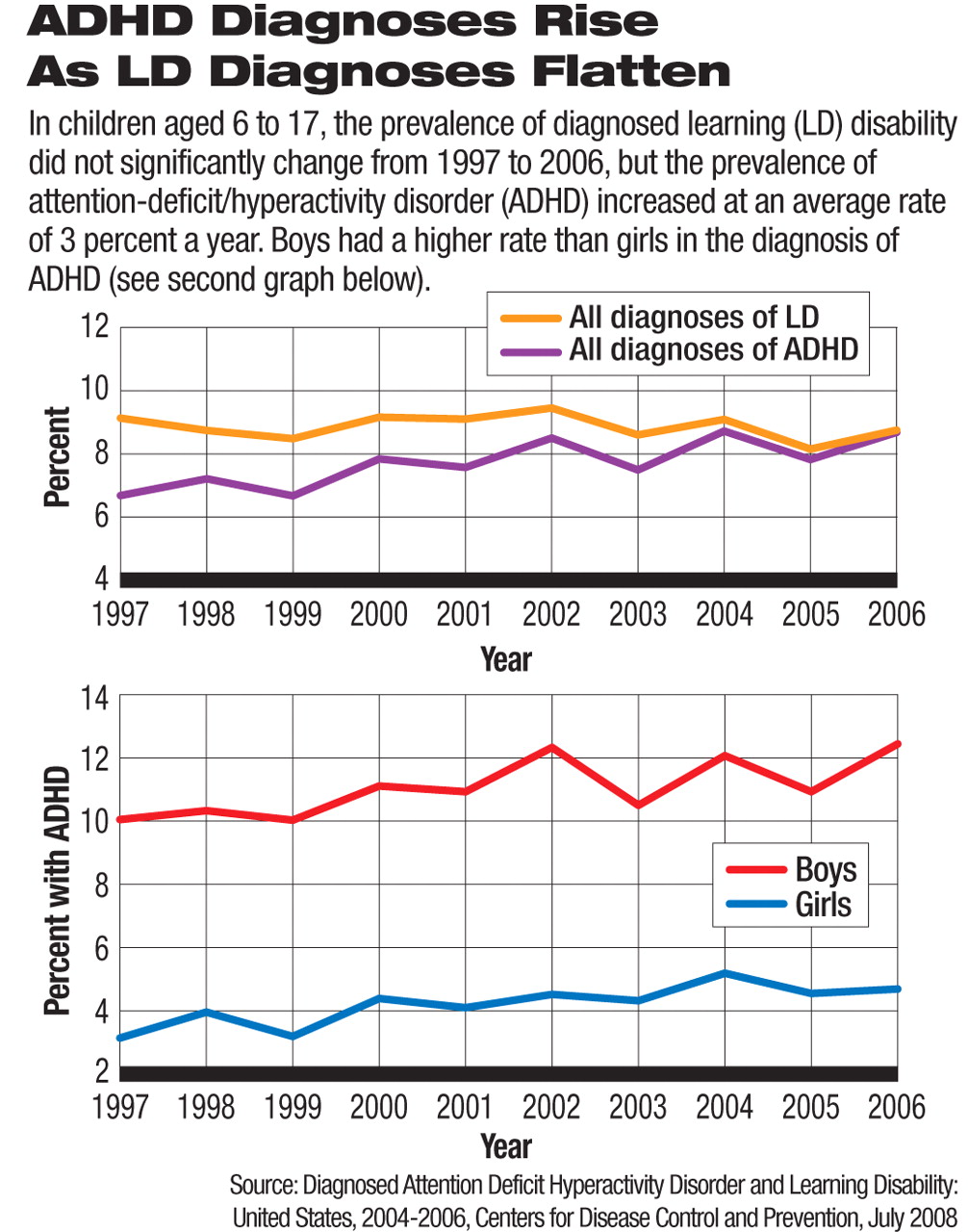There is substantial overlap of attention-deficit/hyperactivity disorder (ADHD) and learning disability (LD) in U.S. children between the ages of 6 and 17, according to an analysis of national survey data released by the Centers for Disease Control and Prevention (CDC) in July.
The CDC's analyses were based on data collected in the 2004, 2005, and 2006 National Health Interview Survey (NHIS), a nationwide survey conducted by the National Center for Health Statistics using a representative sample of the noninstitutionalized civilian population. The data collected on almost all of the children sampled were obtained via the direct questioning of a parent and included demographic information about the child, diagnoses of health conditions, use or non-use of special educational services and health care services, and any medications they took.
The prevalence of having ADHD without LD was approximately 4.7 percent among children aged 6 to 17. The prevalence of LD without ADHD was 4.9 percent. About 3.7 percent had both diagnoses concurrently, indicating a high rate in the coexistence of both conditions in this population. The long-term trends of diagnoses of ADHD and LD showed that, from 1997 to 2006, the overall prevalence of LD remained more or less flat, but ADHD diagnoses had increased over the decade (see chart).
Gender is a significant factor in the rates of both diagnoses. More boys had the diagnosis of ADHD only, LD only, or both ADHD and LD than girls (see chart). Adolescents (12 to 17 years of age) were more likely to be diagnosed with each of the three types of diagnoses than younger children (6 to 11 years of age). The report also noted an association between low birth weight and LD regardless of co-existing ADHD but not between low birth weight and ADHD without LD.
Hispanic children were less likely than non-Hispanic black children and non-Hispanic white children to have a diagnosis of ADHD (with or without LD). Children covered by Medicaid had a higher rate of having a diagnosis of ADHD only, LD only, or both, than children without insurance or with private insurance.
This report is helpful as it provides current “data on the prevalence of ADHD and learning disabilities as actually diagnosed in a large population,” David Fassler, M.D., a child psychiatrist and a clinical professor of psychiatry at the University of Vermont and secretary-treasurer of APA, commented to Psychiatric News. The higher incidence of ADHD diagnosis among adolescents between the ages of 12 and 17, he noted, is probably attributable to several factors including “increased knowledge about ADHD and improved access to appropriate health care and educational services.”
In addition, children with either ADHD, LD, or both were more likely than children with neither to have comorbid chronic medical conditions such as cerebral palsy, muscular dystrophy, cystic fibrosis, sickle-cell anemia, diabetes, arthritis, or heart disease. The prevalence of asthma, however, did not differ among children with these diagnoses and those without it.
Both ADHD and LD present significant burdens on families, schools, and health care systems. Children with ADHD only, LD only, and both had a greater need for health care and special-educational services, including having contacts with a medical specialist or a mental health professional, using prescription medications, having four or more health care visits in the past year, and receiving special-education services. The need was higher in children with both ADHD and LD compared with those having only one of the conditions.
“As the report notes, it's been estimated that the annual societal cost attributable to ADHD is in excess of $30 billion,” said Fassler.“ Hopefully the results of this study will further enhance awareness and recognition of this common and treatable disorder.”
“Diagnosed Attention Deficit Hyperactivity Disorder and Learning Disability: United States, 2004-2006” is posted at<www.cdc.gov/nchs/data/series/sr_10/Sr10_237.pdf>.▪

